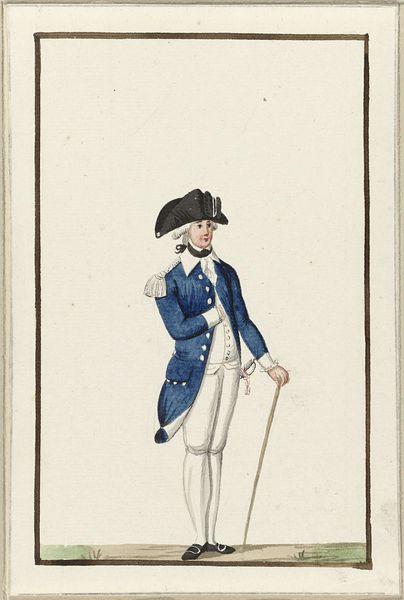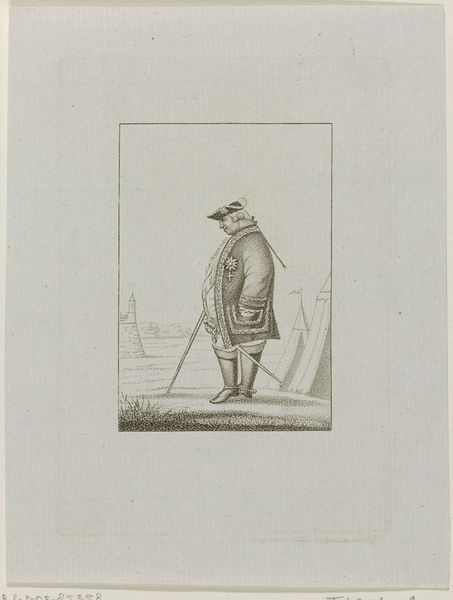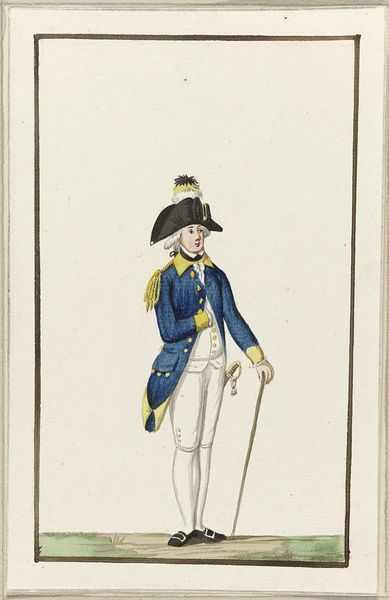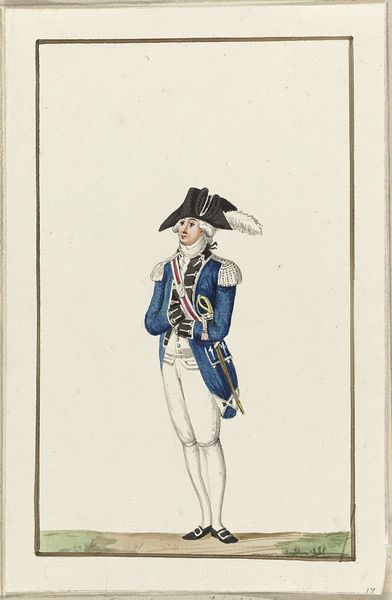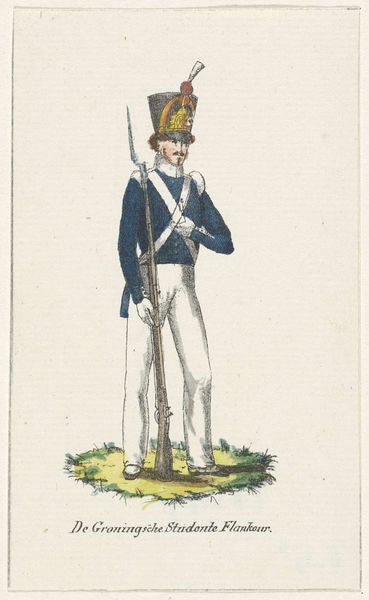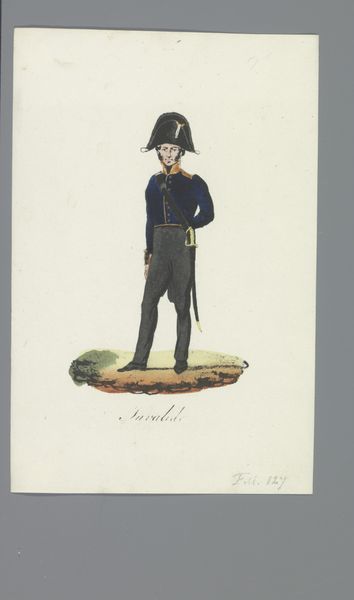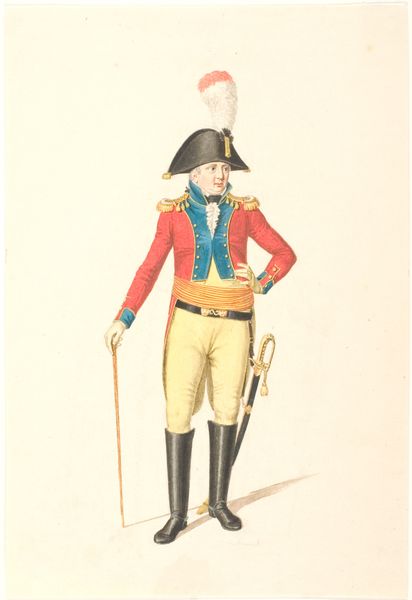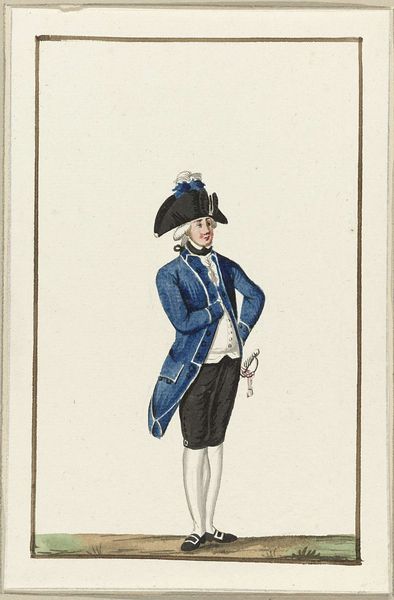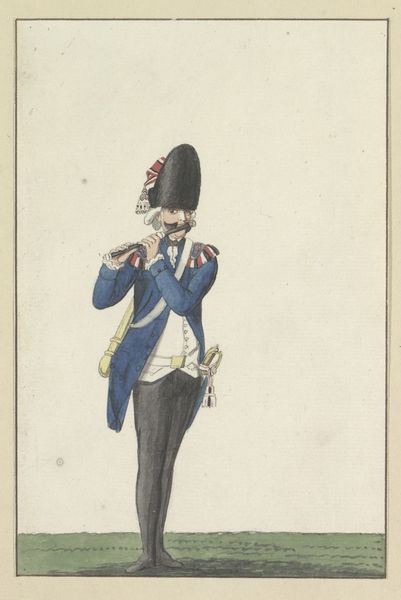
Dimensions: height 135 mm, width 95 mm
Copyright: Rijks Museum: Open Domain
Curator: Welcome to the Rijksmuseum. We’re now standing before an intriguing work: "Portret van de hertog van Brunswijk, 1784," a watercolor by an anonymous artist, created in 1784. Editor: Well, immediately I’m struck by the man's isolation within the composition. He seems burdened, almost melancholy. Curator: Interesting observation. I see the figure primarily as an exercise in colour and form. Notice how the cool blues of his coat contrast against the softer pinks and greens of the background, drawing the eye. And how the line of the landscape mimic the figure's hunched pose. Editor: Yes, and that isolation tells a story. Brunswick was a figure of considerable power, yes, but also increasing irrelevance by the time this was painted, mired in political maneuvering that ultimately undermined his position. The painting, seemingly Rococo in its elegance, hints at something darker beneath the surface. It's political art in disguise. Curator: Ah, but the formal restraint! The clear delineation of form suggests neoclassical tendencies blending into what’s broadly considered rococo; consider the emphasis on line and idealized depiction rather than raw emotionality, distancing us as the beholder from direct interaction with emotion and expression. This coolness shapes a certain aesthetic distance. Editor: Agreed on aesthetic distancing. Yet, one must view art as fundamentally socio-political. The tent in the backdrop speaks not of triumph but potential conflict, alluding to Brunswick's fading military power, mirroring the anxiety surrounding leadership shifts during the time. It is, I feel, the perfect encapsulation of the fragility of power even as expressed via visual restraint. Curator: I see that your analysis is driven to read socio-historical tension in it. And yes the contrast makes sense, since Rococo was employed mainly as the visual language for courtly, aristocratic portraiture, while this painting betrays internal division using lines that express fragility. Perhaps it reflects broader instabilities that the figure could not evade. Editor: Perhaps, yes. Though ultimately the effect is to prompt a consideration about public perception and the personal toll exacted on historical figures trapped in larger shifts, even now. Curator: Indeed. Perhaps a richer engagement requires reading socio-political content through artistic decisions, and formal techniques as ways into hidden meanings.
Comments
No comments
Be the first to comment and join the conversation on the ultimate creative platform.
